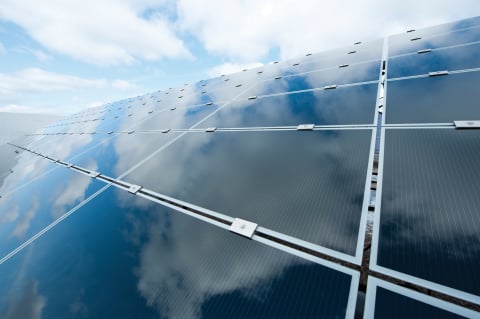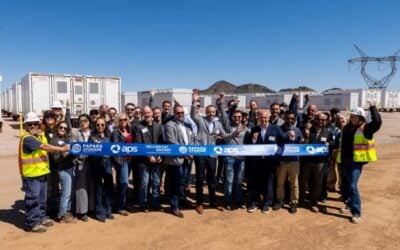
Vertically-integrated solar energy company First Solar will be involved in the first megawatt-scale battery system announced in Arizona since it was revealed the state could put a 3,000MW energy storage deployment target in place.
US-headquartered First Solar, which makes and deploys thin-film solar PV panels at utility-scale projects, made an investment a while back into grid-scale and commercial system integrator and provider Younicos but had yet to make a move into a project.
Enjoy 12 months of exclusive analysis
- Regular insight and analysis of the industry’s biggest developments
- In-depth interviews with the industry’s leading figures
- Annual digital subscription to the PV Tech Power journal
- Discounts on Solar Media’s portfolio of events, in-person and virtual
A 50MW battery – MWh rating was not revealed – will be charged with the output from a 65MW solar field to deliver energy to customers during peak demand periods in a project being undertaken by First Solar and utility Arizona Public Service (APS).
In other words, the solar-plus-storage system will be configured to dispatch large amounts of energy between 3pm and 8pm each day, delivering “clean power to Arizonans on hot summer days”, First Solar said. During those time periods, solar PV generation is starting to ramp down as energy use rises, for example as domestic customers arrive home from work and start up their household appliances in the early evening.
APS had issued a request for peaking capacity resources, to which First Solar responded and was awarded the contract to build and operate the facility. Going forward, APS has a plan in place to deploy 500MW of energy storage over the coming 15 years.
The project follows closely on the heels of Andy Tobin, a director at Arizona’s regulator, the Corporation Commission, presenting a plan at the end of January to generate 80% of Arizona’s power from renewable sources by 2050, establish a so-called ‘Clean Peak’ standard and instruct utilities to install 3,000MW of energy storage by 2030.
Energy storage deployments are already under way in the state. Another of the main utilities, Tucson Electric Power (TEP), announced a 100MW solar PV array coupled with a 30MW/120MWh energy storage system, which would sell its output to TEP at less than three cents per kilowatt-hour from the combined installation for a 20-year period – a “historically low price”.
Other developments include the announcement that APS will save itself from building miles of expensive transmission and distribution (T&D) infrastructure with the strategic deployment of two 8MWh energy storage systems, which Energy-Storage.News reported in August last year. In a recent technical paper, Alex Eller of Navigant Research discussed the topic of energy storage as an alternative to T&D spending.
Dynamics of rooftop PV versus utility-scale add nuance to discussion
The spread of solar has been a contentious issue in Arizona, with controversies over rooftop solar in particular and accusations that utilities are less than keen to accommodate the technology. However utility solar has not suffered similar difficulties and continues to grow apace.
Lon Huber, vice president and head of consulting at Stratagen Consulting told Energy-Storage.News that: “There have been some issues with rooftop solar and the utilities in the past”.
“APS came to a settlement, TEP’s case is still ongoing, it hasn’t been a smooth relationship necessarily but this plan is pretty co-ordinated and it’s pretty comprehensive so every resource will have its role to play,” Huber said of the 3,000MW target and overall plan put forward by the Corporation Commission.
“The price of [utility-scale] solar in Arizona is at or below wholesale prices. Just think about that – it’s not in 20 years, it’s today, at or below wholesale. When you can get a PPA for 2.5-3 cents per kWh, fixed for more than 20 years, that’s really hard to beat!
“Utility solar has a higher capacity value. And so if somebody says to you, just from a cost-efficiency standpoint, would you like to do 2.5 cents solar with a high capacity value or 10 cent rooftop solar with a lower capacity value, which would you pick?
“The distribution system in Arizona is not like in New York or California, there’s not huge constrained load pockets that you can’t get wires into and so there’s no way a distribution system can make up for a seven cent gap or whatever it is. So I think it’s important to note that Arizona is a different animal in terms of distributed versus utility-scale. We have huge amounts of cheap land and great sun which makes utility-scale prices just unbelievably affordable.
“That’s at the heart of this policy, it recognises that and says, great, now that we have this super-cheap fuel, let’s use it to meet our peak demand, instead of just taking it whenever it produces.”
First Solar CEO Mark Widmar said the company was “excited to partner with APS to demonstrate the capabilities of solar coupled with large-scale battery storage”.
“Together, these technologies highlight the significant role for solar in providing reliable, cost-effective energy.”






